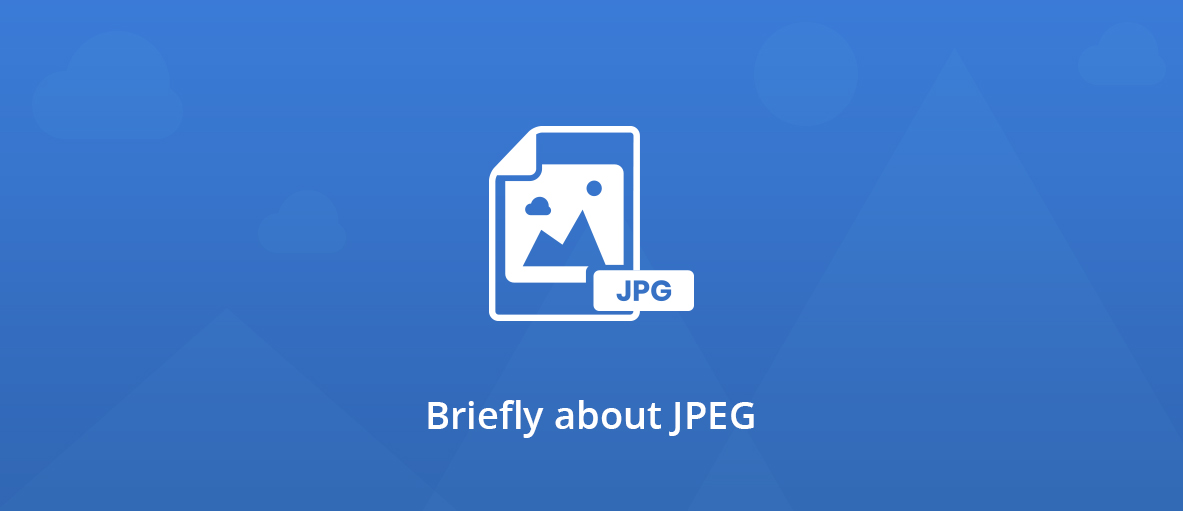Hi folks,
We are going to dedicate an article to each of the most popular bitmap file formats and today we will make a quick incursion through JPEG.
JPEG (.jpg or .jpeg) is a bitmap image file format specifically developed for storing photographic images (its name standing for “Joint Photographic Expert Group”).
It has indeed become a standard format for photos in digital cameras and also for displaying images on internet web pages, as we all know.
But on the other hand, another well-known fact is that JPEG uses lossy compression.
JPEG compression
So how can its general adoption be explained in photographic field, where losing information is not desirable?
The answer resides in the smart solution the creators of this format found to compromise between image quality and file size.
Compression techniques used in JPEG are oriented towards retaining details which have bigger impact on the human eye and discarding those who have less visual impact and it is based on the fact that human eyes are less receptive to slight differences in color than they are to slight differences in brightness (light/dark).
Moreover, JPEG format is highly flexible, providing compression options (among other), whose settings can be changed to fit the needs of each image, so any image creator can negociate file size against output image quality at his own will.
JPEG compresses full-color (24 bit) as well as grey-scale digital images.
Following the primary target for which it has been created for, JPEG works very well on photos for the purpose of sharing.
Typically a 10:1 compression rate produces little perceptible losses in image quality.
Therefore, the initial RAW format of a digital camera photo is converted to much smaller sized JPEG and the differences will not be bothering for the average human eye.
It is important to note, however, that JPEG compression introduces loss artifacts even if the output quality option is set to its maximum value by the user.
Another important thing to know is that each succesive JPEG file’s opening-for-editing then saving introduces additional image quality degradation (of course, JPEG opening-for-viewing doesn’t affect image’s quality).
So users who need one or several image editing sessions until reaching a final version should work with lossless formats, such as TIFF or PNG instead of JPEG.
Actually, JPEG does provide support for lossless compression, too (developed later, as an extension to the “classic” JPEG) but this addition never gained popularity.
JPEG2000
JPEG2000 (.jp2, .j2k) is another standard created by the Joint Photographic Experts Group (in the year 2000), meant to improve the 1992, “regular” JPEG performances and offer some new capabilities that were missing in JPEG.
It provides:
- both lossless and lossy compressions
- better image quality at smaller filesizes than JPG
- 48-bit color depth support
- decoding with different output resolutions
- possibility of dividing an image into smaller parts to be coded independently,
- transparency,
- and the list goes on.
Being quite complex, JPEG2000 implementation took time to spread out but it is already present in the mainstream now and some say it is a serious competitor to the good old TIFF format, given the 48-bit color support, the much better lossless compression algorithm and the possibility of using a single format flexible enough to satisfy both archiving needs (lossless master files) and sharing/access requirements (lossy but much smaller versions of the master files).
Progressive JPEG
Let’s not finish without saying a word about Progressive JPEG, too: this is a special kind of JPEG sub-format meant to better serve web-users for larger files and/or slower internet connections.
The web-optimization consists in allowing users to start viewing the image in browser while it is still downloading and view it at full quality when download is complete (instead of viewing it only after the complete download of the file).
The basic principle which led to creating this format is that, from an user’s point of view, appearing faster equals to being faster so speed-as-perceived-by-user is more important than the real speed.
Actually, the same principle led to the creation of another filetype sub-format, the Linearized PDF, a subject we will detail in a separate article, soon.
Latest versions of the most important browsers supports Progressive JPEG but the format is not credited with widespread, at least not yet.
However, mobile devices might prove decisive for the future of Progressive JPEG, given its responsiveness.
If you want to juggle with RAW, JPEG, Progressive JPEG and JPEG2000, alongside with many other bitmap and PDF formats, we have our ready to use solution PaperScan and our SDK GdPicture.NET.
10/11/2019 edit
And if you wish to convert JPEG files to PDF online, check our AvePDF web app!
You can include any of our widgets on your own website, just like below:
See you next week!
Bogdan
